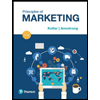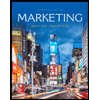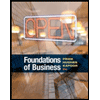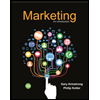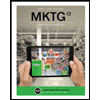Evaluate and Analyze: How did Coke and Pepsi Differentiate Their Brands in the Cola Wars? Coke and Pepsi have differentiated their brands by focusing on different societal demographics, i.e., Coke has followed the traditional family model while Pepsi has focused on the younger age groups. Both companies have co-branded. Coke has co-branded with major food and hotel chains, and Delta Airlines. By owning other beverage brands Coke is the world’s largest beverage company. By contrast, Pepsi has diversified through ownership of food and restaurant companies such as Frito-Lay, Buffalo Wild Wings, and Panera Bread. Coke has maintained its logo color and print style while Pepsi has changed its logo 12 in 125 years. Product logos, taste, co-branding, acquisitions, diversification, advertising, celebrity endorsements, and even the types of product dispensers have created brand distinctions. But some of these different approaches and strategies have also created public relations and image problems for both companies. Following the February snowstorm in Texas, Dasani, a Coke-owned water company, donated 100 pallets of water to the city of Waco. Social media quickly criticized Dasani because of Bromate, a carcinogen, being found in Dasani products in the UK. (Suciu, P., 2021). Pepsi has had its share of critics too. Frito-Lay, a Pepsi-owned company, once used the Frito Bandito created by the famous cartoonist Tex Avery to promote its Frito corn chips. Avery also created other cartoon characters such as Bugs Bunny, Porky Pig, Speedy Gonzales, and Daffy Duck. Mexican American advocacy groups objected to the Frito Bandito advertisements on the grounds of racism. They were stopped in 1971. (DeLong, W., 2018) When Coke and Pepsi entered the China market, they selected slogans they thought were positive for their brands but when translated to the Chinese language meant something altogether different. The slogans were quickly modified. (Fromowitz, M., 2013) Maintaining a high moral code defines a company’s values and culture and is important in retaining brand loyalty. (Coon, J., 2018
Evaluate and Analyze:
How did Coke and Pepsi Differentiate Their Brands in the Cola Wars?
Coke and Pepsi have differentiated their brands by focusing on different societal demographics, i.e., Coke has followed the traditional family model while Pepsi has focused on the younger age groups. Both companies have co-branded. Coke has co-branded with major food and hotel chains, and Delta Airlines. By owning other beverage brands Coke is the world’s largest beverage company. By contrast, Pepsi has diversified through ownership of food and restaurant companies such as Frito-Lay, Buffalo Wild Wings, and Panera Bread. Coke has maintained its logo color and print style while Pepsi has changed its logo 12 in 125 years.
Product logos, taste, co-branding, acquisitions, diversification, advertising, celebrity endorsements, and even the types of product dispensers have created brand distinctions. But some of these different approaches and strategies have also created public relations and image problems for both companies.
Following the February snowstorm in Texas, Dasani, a Coke-owned water company, donated 100 pallets of water to the city of Waco. Social media quickly criticized Dasani because of Bromate, a carcinogen, being found in Dasani products in the UK. (Suciu, P., 2021).
Pepsi has had its share of critics too. Frito-Lay, a Pepsi-owned company, once used the Frito Bandito created by the famous cartoonist Tex Avery to promote its Frito corn chips. Avery also created other cartoon characters such as Bugs Bunny, Porky Pig, Speedy Gonzales, and Daffy Duck. Mexican American advocacy groups objected to the Frito Bandito advertisements on the grounds of racism. They were stopped in 1971. (DeLong, W., 2018)
When Coke and Pepsi entered the China market, they selected slogans they thought were positive for their brands but when translated to the Chinese language meant something altogether different. The slogans were quickly modified. (Fromowitz, M., 2013)
Maintaining a high moral code defines a company’s values and culture and is important in retaining brand loyalty. (Coon, J., 2018)
Trending now
This is a popular solution!
Step by step
Solved in 3 steps

